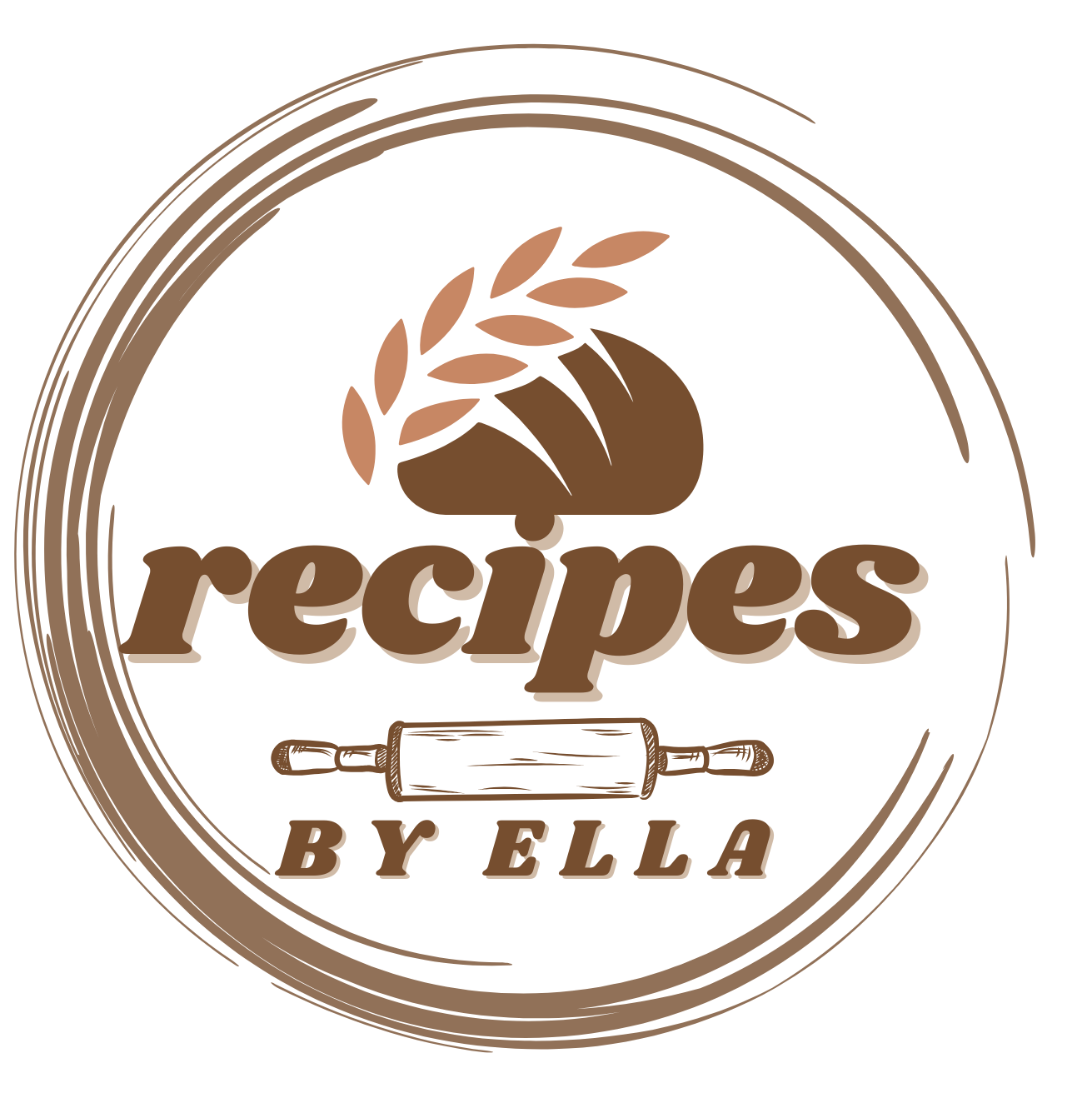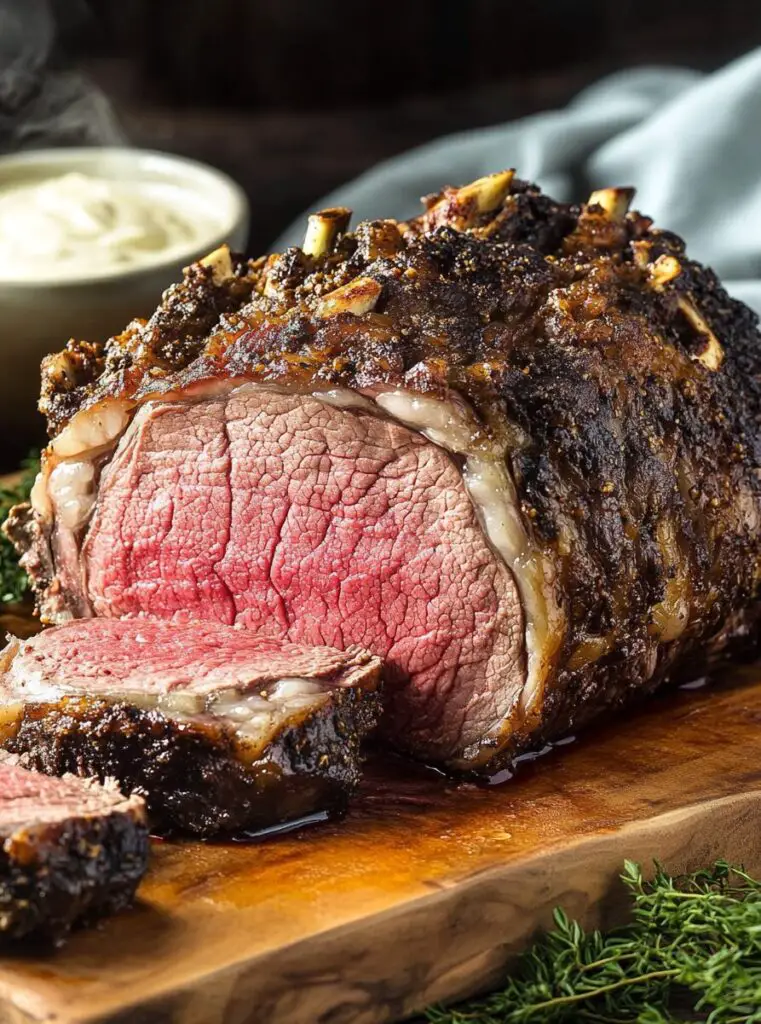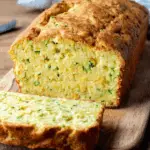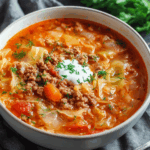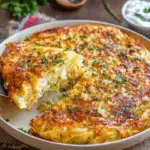Prime rib is a showstopper centerpiece for any special occasion, especially during the holidays. Chef John’s Perfect Prime Rib recipe simplifies the process, offering a foolproof method to achieve a juicy, medium-rare roast with minimal effort. By using precise timing and residual oven heat, this recipe guarantees a tender and flavorful result every time.
Ingredients
- Prime rib roast (bone-in or boneless, brought to room temperature)
- Salt and pepper (or your preferred seasoning mix)
Directions
- Prepare the Prime Rib: Ensure the prime rib is at room temperature before cooking. This is critical for even cooking.
- Calculate Cooking Time: Multiply the roast’s weight (in pounds) by 5 minutes. For instance, a 5.35-pound roast requires 27 minutes of cooking time (round up if needed).
- Preheat the Oven: Set the oven to 500°F. This high heat helps sear the roast and lock in its juices.
- Season the Meat: Generously season the roast with salt, pepper, or a seasoning mix of your choice, ensuring an even coating.
- Cook the Prime Rib: Place the seasoned roast in the oven and cook at 500°F for the calculated time.
- Rest in Oven: After cooking, turn off the oven and let the roast sit inside for 2 hours without opening the oven door.
- Check Doneness: After 2 hours, the roast should be medium-rare. For assurance, use a thermometer to ensure the internal temperature is 125°F. If it reaches this temperature earlier, remove it promptly.
- Serve: Slice the roast and serve immediately, optionally pairing with au jus or horseradish sauce.
Nutrients (approximate per serving)
- Calories: Varies by portion size and specific cut
- Protein: High
- Fat: High, with some saturated fat
- Carbohydrates: Minimal
- Cholesterol: High
This method delivers a perfectly cooked roast that’s easy to prepare and sure to impress!
The Perfect Prime Rib: A Culinary Masterpiece for Special Occasions
Prime rib is not just a meal; it’s a statement. This iconic roast has long been a symbol of celebration, gracing tables during holidays, anniversaries, and special gatherings. Its rich, tender meat and juicy flavor make it a standout choice for any occasion. Among the myriad methods to prepare prime rib, Chef John’s Perfect Prime Rib recipe stands out for its simplicity and guaranteed success. By using precise cooking techniques and minimal intervention, it ensures a perfectly cooked, medium-rare roast every time.
Why Prime Rib is a Cut Above
Prime rib, also known as a standing rib roast, comes from the primal rib section of a cow. This cut is prized for its marbling, which contributes to its juicy and tender texture when cooked. The term “prime” refers to the USDA grading system, but even when the meat isn’t graded as prime, the cut retains its quality. Its unique combination of fat and lean meat makes it a favorite for roasting, as the fat renders during cooking, infusing the meat with flavor.
Chef John’s recipe capitalizes on the natural attributes of this cut, emphasizing simplicity and letting the prime rib’s intrinsic qualities shine. Whether you’re a seasoned home cook or a novice, this method is accessible and nearly foolproof.
The Genius Behind Chef John’s Method
Traditional prime rib recipes often involve complex steps, such as constant basting or monitoring cooking times and temperatures closely. Chef John’s method revolutionizes the process by introducing an innovative approach: high-heat roasting followed by residual cooking.
- The High-Heat Sear
Roasting the meat at 500°F for a short period creates a beautiful crust. This initial step not only locks in juices but also enhances flavor through the Maillard reaction, where proteins and sugars in the meat caramelize to form a savory, golden-brown exterior. - Residual Heat Cooking
After the high-heat phase, the oven is turned off, and the roast is left undisturbed for two hours. This clever technique relies on the oven’s retained heat to cook the meat evenly to a perfect medium-rare. By avoiding constant opening of the oven, this method maintains a consistent environment, ensuring the roast cooks gently and uniformly.
Keys to Success: Preparation and Precision
1. Room Temperature Matters
One of the cardinal rules for roasting prime rib is to bring the meat to room temperature before cooking. This ensures that the roast cooks evenly, preventing an overcooked exterior and an undercooked center.
2. Accurate Timing
Chef John’s formula for cooking time—multiplying the weight of the roast by five minutes—takes the guesswork out of the equation. For example, a 5.35-pound roast needs 27 minutes in the oven at 500°F. This precise calculation, paired with residual heat, consistently delivers outstanding results.
3. Seasoning for Success
Generous seasoning is essential. While salt and pepper suffice for purists, custom blends can elevate the flavor profile. Consider incorporating garlic powder, rosemary, thyme, or paprika for a more robust seasoning.
Why This Recipe Stands Out
The appeal of Chef John’s Perfect Prime Rib recipe lies not just in its simplicity but also in its reliability. By eliminating unnecessary steps, it allows cooks to focus on other elements of the meal or simply enjoy time with guests. This method doesn’t require constant monitoring, making it a stress-free option for holiday feasts.
Additionally, the recipe is adaptable. Whether you prefer bone-in for added flavor or boneless for easier carving, the approach remains the same. It’s also versatile when it comes to pairings, complementing a wide array of side dishes such as mashed potatoes, roasted vegetables, or creamy horseradish sauce.
Serving Suggestions and Pairings
Prime rib is often accompanied by classic sides that enhance its rich flavor. Popular options include:
- Au Jus: A light beef broth sauce that amplifies the meat’s natural juices.
- Horseradish Sauce: The sharpness of horseradish balances the roast’s richness.
- Yorkshire Pudding: A traditional British accompaniment made from a light, airy batter.
- Garlic Mashed Potatoes: Creamy and savory, they pair beautifully with the meat’s juices.
For beverages, a full-bodied red wine such as Cabernet Sauvignon or Syrah complements the roast’s deep flavors, while a robust craft beer offers a more casual pairing.
Nutritional Considerations
While undeniably indulgent, prime rib is also nutrient-rich, offering high levels of protein, iron, and essential vitamins like B12. However, its fat content, including saturated fat, means it’s best enjoyed in moderation. Pairing it with lighter sides, such as steamed vegetables or a fresh salad, can balance the meal nutritionally.
Conclusion: The Perfect Prime Rib Experience
Chef John’s Perfect Prime Rib recipe transforms an often-intimidating dish into a straightforward culinary triumph. Its genius lies in leveraging the principles of high-heat searing and residual cooking to produce a tender, flavorful roast every time. This method not only simplifies preparation but also ensures consistent results, making it a trusted choice for holidays and special occasions.
With its bold flavor, tender texture, and elegant presentation, prime rib is more than just a meal—it’s a celebration on a plate. By following this recipe, even novice cooks can create a showstopping centerpiece that will leave guests raving and memories that will last long after the meal is over. Whether paired with classic sides or modern accompaniments, prime rib remains a timeless dish that epitomizes culinary excellence.
